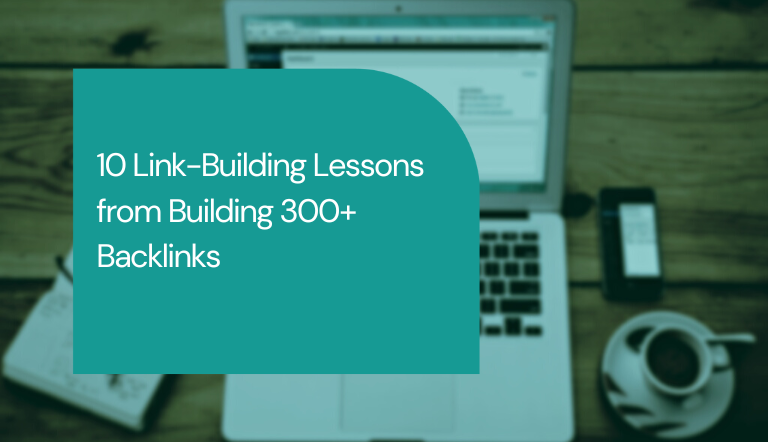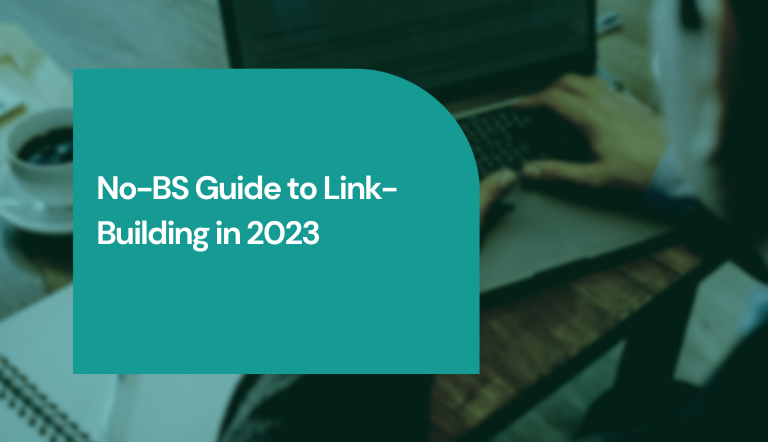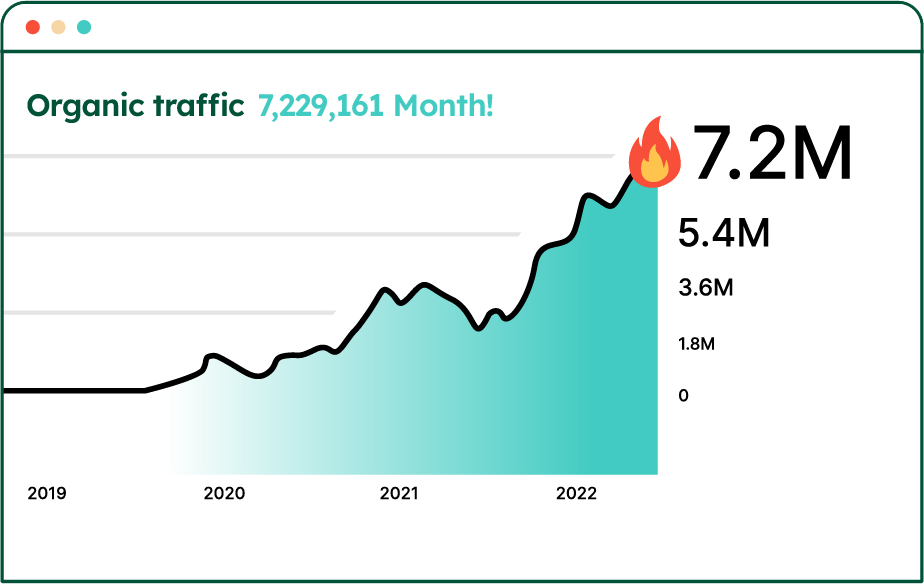If you’re new to SEO, link-building can be a very tough nut to crack.
All the SEO bloggers out there keep rehashing the same tactics, most of which just don’t work in 2022.
Over the past year, we’ve built over 300+ backlinks for several clients, so I thought I’d do a recap post of all the things I’ve learned from the experience!
I’ll cover some of the basics of link-building for those of you who are just getting started, as well as some niche-specific stuff I learned from doing (the type of stuff you won’t find in regular blog posts).
So, let’s get started:
#1. Link-building works differently in every niche
One huge mistake a lot of people make with link-building is treating it as a one-size-fits-all strategy.
In reality, the link-building process differs a ton based on the niche you’re in.
If you’re in a very popular niche, link-building is going to be on the easier side. There are a TON of people who blog about topics like:
- Fitness
- Self-development
- Parenthood
- Weddings
- Interior Design
So, you’ll have a much easier time doing prospecting, outreach, and closing backlinks.
If you’re in some very niche B2B industry, on the other hand, things are going to be a lot different. Chances are, you’re not going to find someone casually blogging about buying/selling used machinery, for example, so your prospect pool is going to be way smaller. The same goes for accounting, dentistry, and other niches.
Here are some specific things I learned about link-building in different SEO niches:
- If you’re in a consumer-oriented niche, you have a ton of potential prospects and they’re usually receptive to outreach. Compliment their blog, offer an incentive (more on this later), and you’re good to go!
- If you’re in a competitive niche (CBD, gambling, forex, etc.), you’ll always have to pay for backlinks, and the fee will be pretty high. The best prospecting tactic for this is finding websites that link to your competitors, as it’s guaranteed they’ll be willing to link to a site in a risky niche.
- If you want to build backlinks from SaaS websites, you’ll want to offer a backlink in return or some other kind of useful resource for them. Otherwise, there is a very low chance of getting a reply.
- If you’re in a niche no one blogs about, your best bet is to find blogs in adjacent niches and pitch guest posts. E.g. If your site sells used machinery, you can find engineering or tech blogs and pitch (paid) guest posts.
#2. Offer something for the backlink
It’s 2022 – everyone who’s ever run a website knows just how valuable backlinks are.
So why would you think that a site owner is going to be happy to link to you just because your content is cool?
If you want someone to give your website a link, you should be willing to give something in return.
This something can, for example, be straight-up cash. If your outreach prospects are part-time bloggers that don’t know how to monetize their website, a one-time placement fee is going to get you very good response rates.
Alternatively, you can offer a backlink exchange. You link to them, they link to you – it’s a win-win situation. Unless you do this at scale, Google is very unlikely to catch on.
Ahrefs did a study on this a while back and found that 73%+ of websites have reciprocal links, which means this is a natural occurrence on the Internet and unlikely to get you penalized. If you want to be extra safe, you can try the ABC link exchange method instead.
Finally, you can offer a free product in exchange for that backlink.
- If you run an online store, you can send them a free pair of sneakers (or whatever else you’re selling).
- If you’re in the SaaS game, you can offer free access to your software. E.g. one of the email finder companies offered 500 credits in exchange for a single backlink.
Yes, I know this is against Google’s policies, but practically speaking, this is what works these days.
#3. Your competitors don’t really have thousands of backlinks
This one’s a bit of a rookie mistake, but since most people don’t know about it, I thought I’d cover this too.
If you run a random website through Ahrefs, you’ll see that they have thousands or tens of thousands of backlinks.
If your site is brand-new, this might seem super intimidating.
How are you ever going to catch up with THAT many backlinks?
Well, the truth is, your competitors don’t actually have that many backlinks – 95% of those links are junk links that have zero impact.
To get a real view of your competitor’s backlink profile, do the following on Ahrefs or SEMrush:
- Filter for do-follow links only (meaning, only links that have SEO effect)
- Backlink type: in content (basically you’re only looking for backlinks that are placed in blog posts as opposed to headers or footers of the site)
- DR: 20+ (less than that usually means that the backlink carries very little juice)
And you’ll see their total number of backlinks go from 2,500:
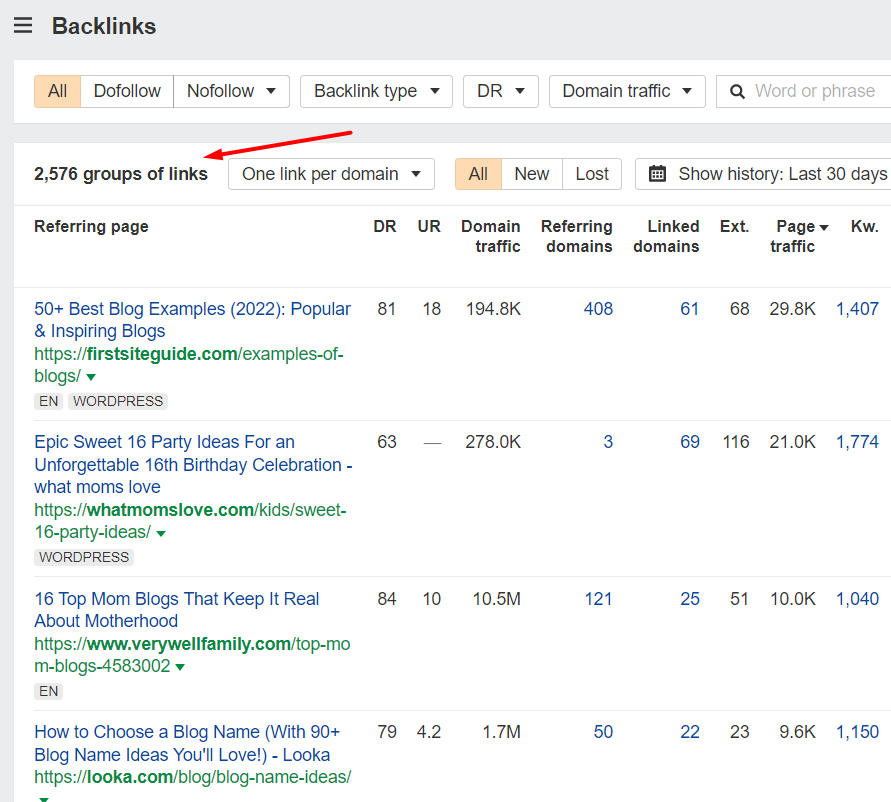
To just 95.
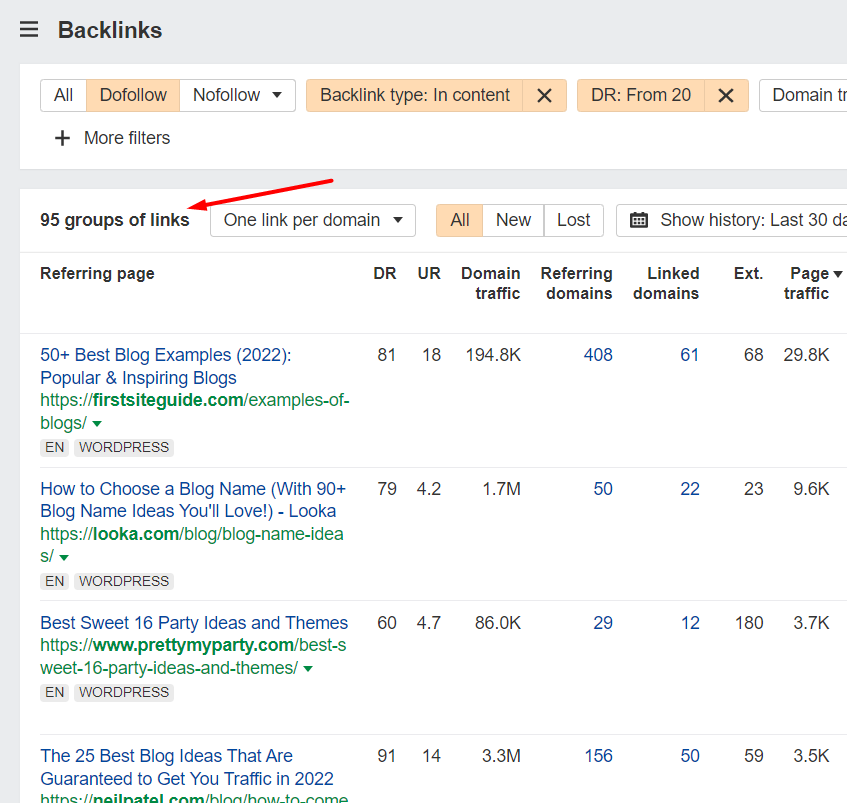
Which is a MUCH more reasonable target! If you want to hit 95 backlinks within a year, that’s only eight backlinks per month, VS 208 links if your real target was 2,500.
#4. Learn to evaluate backlinks
Way too many people make the mistake of basing link-building decisions on DA/DR.
These metrics, however, are good for a surface-level analysis. If you want to learn the value of a backlink, you need to dive deeper.
Some things to look at when analyzing a backlink are:
- DA/DR. Use this just to exclude low DR (<10 DR) backlink prospects. Such links won’t carry much weight, so you can safely exclude them.
- Traffic. The more traffic a website is driving, the more likely it is that it’s in Google’s good graces.
- Traffic trend. Is the website’s traffic stable? Even if a site is driving ~2,000 traffic, it’s still a bad link prospect if last month they were driving 20,000. This means that they likely got penalized.
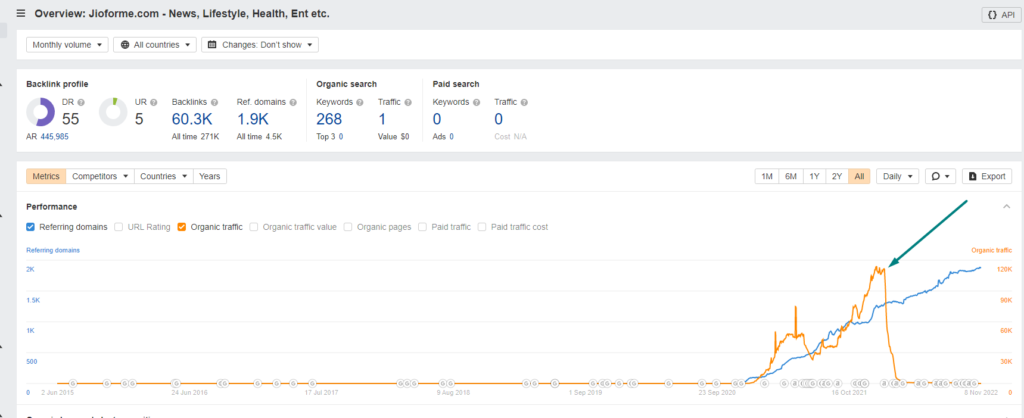
- Keywords. What kind of keywords is the site ranking for? Link farms sometimes rank for very easy (but useless) keywords to make it seem like they’re good link prospects. If the site ranks for keywords associated with your niche, that’s great!
- Contextual relevance. Is the blog/page you’re getting a link from relevant to your website? A link from a cooking blog to a digital marketing blog won’t be very helpful. The same goes for page relevance. A link from an article on golf to your article about digital marketing won’t look natural at all, and Google will likely ignore it.
#5. Really nail down your prospecting ops
The success of every outreach campaign primarily depends on two factors:
- Are you picking the right prospects?
- Are your outreach emails engaging enough?
Let’s talk about #1 first.
There are a ton of ways to do prospecting depending on the niche you’re in, so I’ll just give you a bunch of tactics that work for me.
But first, here’s the prep work:
- Hire a VA. This is non-negotiable. Prospecting takes a TON of time, but it’s also something that you can learn how to do very fast and easily. No point doing it yourself.
- Teach your VA how to evaluate backlink prospects. They should know to exclude all big websites, how to detect backlink farms, and how to find sites that fit your criteria.
- Start by doing a competitive backlink audit. If someone linked to your competitor, chances are they’ll link to you, too. Use Ahrefs or SEMrush for this.
- Teach your VA how to find prospects for a given website. Use tools like Hunter or Snov to find the email addresses and teach them to prioritize roles as follows: SEO lead > content marketing lead > head of marketing or CMO > CEO, founder, or owner. If a site has an SEO lead, they’re the best person to contact. If they don’t, there’s the content lead, and so on. If it’s a solo website, then the founder is your only option.
And the tactics:
- Pick a category of blogs that are likely to link to you. E.g. If you have a fitness site, the categories could be men’s health, fitness, weight lifting, sports, football, etc. Give your VAs to collect such websites. Do outreach first and find link placement opportunities second.
- Create a list of keywords that are related to your niche, but not something you’ll ever cover. Give these keywords to your VA and get them to extract all sites that rank for them.
- Run your backlink prospects through Ahrefs/SEMrush. Extract their backlink profiles. Exclude domains that don’t fit your criteria and reach out to the ones that do.
#6. Be creative with your outreach templates
Now let’s talk about email copy.
The first thing you need to know here is that the email copy template you found online is absolutely useless.
No one’s going to give out their winning email strategy just like that. The moment you publish a quality email template online, it’s going to be overused so much that it’ll stop working.
Take the skyscraper technique for example.
I get the same exact email template messages in my inbox daily.
“Hey name, you linked to X, I created Y which is cooler, so please link to it.”
Unless your content is something really amazing, this won’t work.
What you want to do is be creative with your copy. Create 4-5 emails that YOU would like to receive and test how well they work.
Some tips on how to do this:
- Check your inbox for outreach emails. Go through them and see which ones impact you the most. Base your ideas on those.
- Make a genuine compliment in the email. Something that can be reused for different websites without being too generic.
- Offer up something up-front. Why should they link to you? What do you have to offer them?
- Make it low-effort. Tell them EXACTLY where you want your link placed. The less effort they have to put into the placement, the more likely they are to do it.
- Make sure that your cold emails don’t have any links or images. The cleaner your outreach emails, the more likely it is that they won’t end up in the spam folder.
- Personalize as much as possible. The more personal elements you include in the email, the better it’ll work. Name, website name, a specific post you liked on their blog, something about their website you really liked, and so on.
#7. Re-use your prospect lists
In a lot of cases, the reason you don’t get a reply from your prospect is simply that they were not feeling like it at the time.
Shocker, I know.
It’s not that they hate you for your cold email (unless they explicitly told you so), or that they’re not interested (they might very well be) – it’s just that they missed your email, forgot about it, or simply didn’t feel like replying at the time.
So, what you can do here is simply resend your outreach to the same prospect 2-3 months later, once they forget about your original email.
A while back, we ran this exact experiment – we reached out to 200 prospects that previously didn’t reply to our outreach.
From the 200 emails, we got 30 replies, and out of the 30 replies, we got 10 backlink placement opportunities!
That said, don’t be a spammer. If the above tactic works once, it doesn’t mean that you should keep hammering the prospects who didn’t reply until they block your email.
#8. Take advantage of inbound outreach emails
If you have a long-running website, chances are, you get a link-building outreach email 2-3 times a week.
Here’s you can take advantage of that:
- Make a counteroffer for link placement. You’ll get them a backlink if they include a link to your site in a guest post on a third-party domain.
- Offer up a backlink exchange. They link to you, you link to them.
- Get inspired by their email copy. If their outreach email copy is really creative, you can base your own outreach copy on it.
#9. When something doesn’t work, dig deep
Sometimes, you’ll see that your link-building just isn’t working.
In such cases, it’s important to know how to troubleshoot your campaigns. Here’s what I do:
- Check on your prospecting. Are the sites you’re collecting likely to link to you? No, Healthline or Forbes are NOT going to link to you, no matter how good your outreach game is.
- Check whether you’re getting the right point of contact. If you’re emailing the CEO when the company has an SEO lead, they’re never going to reply to you.
- Check on your open rates. What percentage of your emails are being opened? If the number is too low, it’s because your email is going to spam, or the subject line is not engaging enough.
- Check your reply rates. What percentage of all email opens lead to a reply? If the reply rate is low, the fault is either in your prospecting (wrong contacts, bad link prospects), in your email copy (it’s too generic or uninteresting), or in your offer (the prospect doesn’t care about what you’re offering for the link).
#10. It’s all a numbers game
Finally, I’ll wrap up this post by saying that link-building is a numbers game.
At the end of the day, most of your prospects won’t reply, and won’t care.
So, do this:
Pick an estimated success rate number. On average, 2.5% – 10% of your outreach emails are going to result in a backlink. Let’s assume a more conservative estimate and go for 2.5% to 5%, as this rate depends on a ton of factors.
So from 100 link prospects, you can expect to get from 2 to 5 backlinks. Then, work backward from there. How many backlinks do you want to build per month?
If your monthly goal is, say, ten backlinks, then to be on the safe side, you should be sending out 500 outreach emails per month.
From there, all you have to do is hire a prospecting VA, give them a daily prospecting KPI, and run your drip outreach campaign with the email software of your choice!
Thanks for reading!
If you liked this post, make sure to check out our Reddit community, /r/seogrowth, and follow me on Twitter!

